Creativity Cocktail
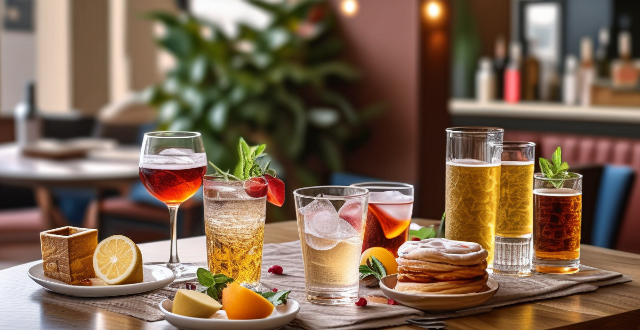
How do I create a signature cocktail for my bar or restaurant ?
How to create a signature cocktail for your bar or restaurant, including determining target audience, analyzing competition, choosing a theme, selecting quality ingredients, experimenting with flavors, perfecting the recipe, naming the cocktail, training staff, marketing the cocktail, and evaluating and adjusting based on sales data and customer feedback.

What are the key differences between classic and modern cocktail styles ?
Cocktail styles have evolved over time, with classic cocktails representing traditional recipes and techniques, while modern cocktails often showcase innovative ingredients and presentation methods. Classic cocktails are known for their simplicity, limited ingredient list, standard measurements, traditional garnishes, and historical significance. Examples include the Martini, Old Fashioned, and Daiquiri. Modern cocktails, on the other hand, feature innovation, complexity, craft methods, visual appeal, and locally sourced ingredients. Examples include the Earl Grey MarTEAni, Smoked Old Fashioned, and Lavender Lemon Drop. In summary, classic cocktails pay homage to the roots of mixology, while modern cocktails celebrate creativity and the ongoing evolution of the craft. Both styles offer a unique drinking experience and cater to different preferences among cocktail enthusiasts.

What are some essential bartending skills for making great cocktails ?
Bartending involves a blend of technical skills, creativity, and customer service. Essential abilities include knowledge of spirits, mixology techniques, glassware selection, speed & efficiency, customer service, creativity & innovation, hygiene & safety, and teamwork. Mastering these skills elevates bartenders' performance, resulting in fantastic cocktails and an enhanced experience for guests.

How can I use bitters to enhance my cocktail recipes ?
Bitters are a crucial ingredient in many cocktails, adding depth and complexity to the flavors. Here's how you can use them to enhance your cocktail recipes: Understanding Bitters: Bitters are concentrated alcoholic extracts made from herbs, spices, fruits, and other botanicals. They are typically used in small amounts to add a subtle, aromatic flavor to cocktails. There are several types of bitters available, each with its own unique flavor profile. Using Bitters in Cocktails: Here are some tips for using bitters in your cocktail recipes: start small, experiment with flavor combinations, use as a garnish, and create your own bitters. Overall, using bitters is an easy way to elevate your cocktail game and create unique, complex flavors that will impress your guests.

What are some effective ways to boost creativity ?
Creativity is the ability to come up with new and original ideas, solutions, or concepts. It is an essential skill that can help individuals in various aspects of life, including problem-solving, decision-making, and innovation. Here are some effective ways to boost creativity: embrace curiosity; take risks; collaborate with others; practice mindfulness; set goals and challenge yourself; find inspiration.
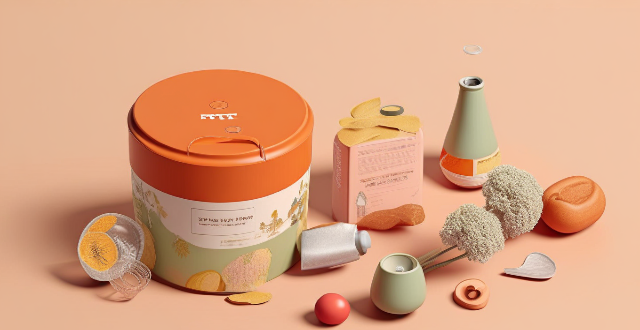
How can educational psychology be used to foster creativity and innovation in students ?
Educational psychology can be used to foster creativity and innovation in students by understanding their cognitive, emotional, and social needs. This involves encouraging curiosity, providing challenges, creating a safe environment, promoting resilience, collaboration, and valuing diversity. Teaching strategies such as inquiry-based learning and differentiated instruction can also enhance these qualities. Alternative assessments like portfolio assessment and performance tasks, along with formative assessment through feedback mechanisms and self-assessment, can further support creativity and innovation in students.
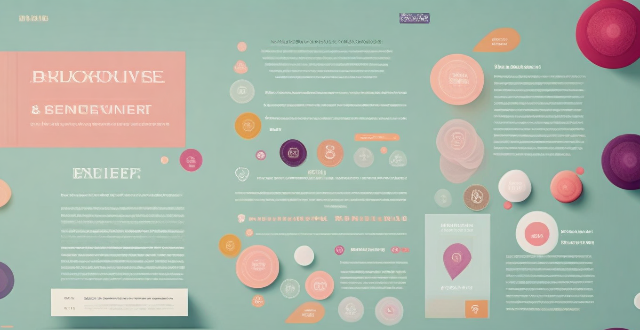
Is there a link between physical activity and improved creativity ?
The text discusses the potential relationship between physical activity and creativity, highlighting various studies and theories that support this link. It suggests that regular physical exercise can enhance creativity by improving blood flow to the brain, promoting a relaxed mental state, and providing necessary breaks from mentally demanding tasks. The text also explores practical implications for individuals and organizations, suggesting strategies such as integrating movement into daily routines and designing active workspaces to boost creative thinking. Overall, while more research is needed to fully understand the relationship between physical activity and creativity, the text encourages incorporating physical activities into daily practices to potentially enhance imaginative thinking and innovation.

What is the relationship between sports and creativity in literature ?
In literature, sports and creativity often intertwine to enrich storytelling. Sports provide a backdrop for character development, narrative structure, and themes that mirror life's struggles. Creative writers use literary devices and unique perspectives to enhance the portrayal of sports, offering emotional connectivity with readers. Examples like "Ender's Game," "Farewell to Arms," and "Personal Best" demonstrate how sports can serve as metaphors and settings for deeper explorations of human nature and society. This intersection allows authors to craft works that resonate on multiple levels, transcending genre boundaries.

What are some tips for balancing sweet and sour flavors in cocktails ?
"Balancing Sweet and Sour Flavors in Cocktails: Tips and Tricks for Crafting Perfect Drinks"

How do I pair cocktails with food for optimal taste experiences ?
Pairing cocktails with food can elevate your dining experience to a whole new level. Here are some tips on how to do it right: 1. Consider the flavor profile of your food. For bold and spicy dishes, you might want to consider cocktails that can stand up to the strong flavors, such as Margarita or Mojito. For lighter dishes, opt for a cocktail that won't overpower the subtleties of the food, like Champagne Cocktail or Whiskey Sour. 2. Match intensity. If you're having light bites or snacks, opt for lower-alcohol cocktails that won't weigh you down, such as Sherry Cobbler or Gin Fizz. For more substantial meals, you might want something with a bit more oomph, like Old Fashioned or Negroni. 3. Think about sweetness. For dessert courses, you'll want a cocktail that can match the sweetness, such as Pina Colada or White Russian. For savory dishes, avoid overly sweet cocktails that might clash, like Daiquiri or Cosmopolitan. 4. Don't forget about acidity. For dishes with a lot of acidity, like lemon-based sauces or vinegar dressings, you might want a cocktail that can stand up to it, such as Woo Woo or Kir Royale. For rich, creamy dishes, a touch of acidity in your cocktail can help cut through the heaviness, like Martini or Bramble. 5. Experiment and have fun! The most important thing is to find what you enjoy. There are no hard-and-fast rules, so don't be afraid to try something new. The best pairing is the one that brings you the most pleasure!

What are some unique and delicious New Year's Eve snacks ?
New Year's Eve is a time for celebration and indulgence, and what better way to celebrate than with some unique and delicious snacks? Here are five ideas to get you started: 1. Fruit and Cheese Platter - Fresh fruits such as grapes, apples, and pears, assorted cheeses like Brie, Cheddar, and Gouda, crackers or bread for pairing. 2. Baked Brie En Croute - Wheel of Brie cheese, puff pastry sheet, egg wash (egg beaten with a bit of water), jam or preserves (optional). 3. Charcuterie Board - Assorted cured meats like salami, prosciutto, and chorizo, assorted olives and pickled vegetables, crackers or bread for pairing, mustard, hummus or other dips. 4. Shrimp Cocktail - Cooked shrimp, peeled and deveined, cocktail sauce or homemade dipping sauce, lemon wedges for garnish. 5. Chocolate Fondues - Assorted chocolate bars (milk, dark, white), assorted dippers like strawberries, marshmallows, and pretzels.

How do I master the art of shaken versus stirred cocktails ?
Mastering the Art of Shaken versus Stirred Cocktails Understanding the Differences: - Shaken cocktails are typically frothier, due to aeration and dilution from ice. - Stirred cocktails preserve clarity and strength, ideal for spirit-forward drinks. Choosing the Right Tools: - Cocktail shakers (Boston or cobbler), jigger, bar spoon, and Hawthorne strainer are essential. Perfecting Your Technique: Shaking involves measuring ingredients, adding ice, shaking vigorously, and straining. Stirring involves similar steps but with gentle stirring in a mixing glass and using a julep strainer. Practical Tips: - Consider desired dilution and temperature when choosing preparation method. - Experimentation through taste testing and recipe adjustment is key to finding preferences.

How do professional bartenders measure ingredients for consistency ?
Professional bartenders use a variety of tools and techniques to measure ingredients consistently. Accuracy is crucial for maintaining the same flavor profile and balancing different tastes in cocktails. Efficiency is also important, as it speeds up drink-making and allows bartenders to focus on customer interaction. Jiggers are commonly used tools for measuring both large and small quantities of liquids. Measuring spoons are used for smaller amounts like bitters or syrup. Digital scales are used for precise measurements by weight, especially for ingredients like fruit juices or syrups. Pour spouts and containers help control the flow of liquids to reduce spillage and waste. Standardization processes such as recipe cards, batching, and taste testing are also essential. Recipe cards include detailed measurements for each ingredient, helping new bartenders learn quickly and maintain consistency. Batching involves pre-mixing a large volume of a single cocktail ingredient or an entire recipe, saving time during busy shifts and ensuring uniformity. Taste tests are crucial even with precise measurements, as bartenders adjust recipes based on customer feedback and ingredient freshness. In conclusion, professional bartenders rely on a combination of tools, techniques, and standardized processes to measure ingredients consistently. This ensures that they can replicate the perfect cocktail every time, providing a high-quality experience for their customers.
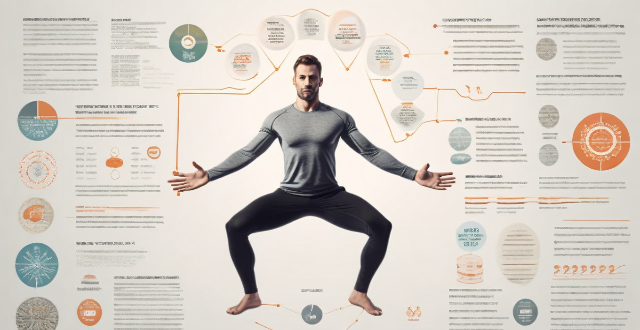
Are there any particular mental exercises that can make me more creative ?
Creativity can be enhanced through various mental exercises such as brainstorming, incubation, analogical reasoning, constraints, reverse thinking, cross-disciplinary learning, physical activity, and mindfulness meditation. These techniques help generate new ideas, foster inventive solutions, and improve cognitive function. By practicing these exercises regularly, one can develop creativity and innovation skills, leading to a more imaginative and productive mindset.

What role does creativity play in sports performance ?
Creativity plays a significant role in sports performance, enhancing problem-solving abilities, improving decision-making skills, and fostering mental toughness. Athletes who are creative thinkers can come up with innovative solutions to challenges, make split-second decisions that impact game outcomes, and stay focused under pressure. Moreover, creativity contributes to the development of new techniques and styles within sports, pushing boundaries and evolving the sport itself. By harnessing their creative potential, athletes can elevate their performance and achieve greater success.

How can mind mapping improve creativity and problem-solving skills ?
Mind mapping is a tool that enhances creativity and problem-solving skills by providing a visual way to organize information. It stimulates brainstorming, enhances visualization, and promotes collaboration for creative thinking. Mind mapping also aids in problem-solving by identifying core issues, providing clarity and focus, and facilitating decision making.

Are there any specific habits or routines that can foster creativity ?
Creativity is a valuable skill that can be developed and nurtured through specific habits and routines. Here are some practices that can help you enhance your creative thinking: 1. Regular Brainstorming Sessions: Set aside time regularly to brainstorm, either alone or with a group. Solo Brainstorming: Write down every idea that comes to mind, no matter how silly or unconventional. Group Brainstorming: Encourage everyone to share their thoughts freely without immediate judgment. 2. Embrace Curiosity: Make it a habit to ask questions and seek answers. Learn Something New Every Day: Dedicate time each day to learn about a new topic or skill. Explore Different Perspectives: Try to understand different viewpoints and approaches to problems. 3. Incorporate Novelty: Introduce new experiences and challenges into your life. Travel: Visit new places and experience different cultures. Try New Hobbies: Take up a new hobby or activity that you've never done before. 4. Regular Reflection: Take time to ponder and analyze your thoughts and feelings. Journaling: Write down your thoughts, ideas, and experiences regularly. Meditation: Practice mindfulness meditation to clear your mind and increase awareness. 5. Collaborate with Others: Work with others to generate innovative solutions. Diverse Teams: Collaborate with people from various backgrounds and disciplines. Brainstorming Sessions: Host collaborative brainstorming sessions to generate new ideas together. 6. Maintain a Healthy Lifestyle: Prioritize self-care and well-being. Exercise: Engage in regular physical activity to improve cognitive function and reduce stress. Sleep: Ensure you get enough sleep to recharge your mind and body. By incorporating these habits and routines into your daily life, you can cultivate a more creative mindset and approach problems with fresh perspectives. Remember that creativity is a skill that can be developed over time, so be patient and persistent in your efforts.

What strategies can I use to overcome creative blocks ?
Overcoming Creative Blocks: Strategies and Techniques Creative blocks can be frustrating, but they're a common occurrence for many people. Fortunately, there are several strategies you can use to overcome them. In this article, we'll explore some of the most effective techniques for getting your creativity flowing again. Understanding Creative Blocks Before diving into strategies, it's important to understand what causes creative blocks. Here are some possible reasons: - Lack of inspiration - Fear of failure - Perfectionism - Stress and fatigue - Routine Strategies for Overcoming Creative Blocks Now that we know some potential causes, let's look at strategies for breaking through those barriers. Change Your Environment Sometimes a change of scenery is all it takes to spark new ideas. Try working in a different location, such as a coffee shop, library, or park. Even rearranging your workspace can help stimulate creativity. Take Breaks and Rest It's essential to give your mind time to recharge. Step away from your work and engage in activities that relax you, like taking a walk, meditating, or listening to music. Often, solutions come when you're not actively trying to find them. Set Small Goals Breaking down a large project into smaller, manageable tasks can help alleviate feelings of overwhelm. Focus on one small aspect at a time and celebrate each accomplishment. Embrace Imperfection Remember that creativity doesn't have to be perfect. Give yourself permission to create something messy or incomplete. You can always refine it later. Collaborate with Others Working with someone else can bring fresh perspectives and ideas. Brainstorm with friends, colleagues, or an accountability group. Their input might be just what you need to break through your block. Practice Mindfulness and Meditation Mindfulness exercises and meditation can help clear your mind and reduce stress, making it easier to access your creative thoughts. Even a few minutes of deep breathing can make a difference. Engage in Other Creative Activities Sometimes engaging in another form of creativity can spark ideas for your main project. Try drawing, writing poetry, or playing music – anything that gets your creative juices flowing. Use Writing Prompts or Creative Exercises Writing prompts or creative exercises can provide structure and guidance when you're feeling stuck. These can be found online or in books dedicated to helping artists and writers overcome blocks. Seek Inspiration from Other Art Forms Look at art, listen to music, watch movies, or read books in genres different from your own. Exposure to other forms of creativity can inspire new ideas and approaches in your own work. Keep a Journal or Sketchbook Regularly recording your thoughts, dreams, and ideas can help you tap into your subconscious mind. A journal or sketchbook becomes a repository for potential projects and solutions to creative blocks.

What are some effective techniques for improving my writing ?
Improving your writing skills involves a combination of reading, practicing, and receiving feedback. Regular reading helps in understanding different styles and techniques, while daily writing exercises such as journaling or crafting short stories enhance clarity and coherence. Grammar and vocabulary practice through exercises and learning new words are crucial. Seeking peer and professional feedback allows for constructive criticism. Revision is key, with multiple drafts and editing tools aiding in refining work. Studying writing techniques through courses and books deepens understanding. Setting writing goals, experimenting with different styles, and using writing prompts foster creativity and structured practice. Lastly, maintaining a healthy lifestyle supports mental clarity and creativity. Consistent effort and patience lead to significant improvements in writing skills over time.

What role does inspiration play in enhancing creativity, and how can I find it ?
The text discusses the importance of inspiration in enhancing creativity. It explains how inspiration can stimulate imagination, motivate action, expand perspectives, boost confidence, and enhance learning. The text also provides tips on finding inspiration, such as surrounding oneself with beauty, seeking out new experiences, engaging with art and culture, connecting with others, taking breaks and resting, embracing curiosity, keeping a journal, practicing mindfulness, staying open to possibilities, and cultivating a growth mindset.

How can parents encourage creativity and critical thinking in their homeschooled children ?
To encourage creativity and critical thinking in homeschooled children, parents should create a stimulating learning environment by encouraging open-ended questions and providing varied resources. Engaging in creative activities like art and music can enhance visual-spatial skills and emotional expression. Promoting critical thinking through problem-solving tasks and family discussions can develop analytical skills. Fostering independent learning through project-based and inquiry-based learning encourages self-directed learning. Parents should also encourage questioning and curiosity, integrating technology into learning, promoting reading, and encouraging risk-taking and accepting failure to prepare their children for future challenges and successes.

How important is it to step outside of my comfort zone for creativity growth ?
The Significance of Exiting Your Comfort Zone for Creative Growth Stepping outside of one's comfort zone is often touted as a crucial element in personal development, especially when it comes to fostering creativity. This process involves venturing into unfamiliar situations or adopting new perspectives that can be initially challenging but ultimately rewarding. In the context of creativity growth, this approach is particularly important. Why Step Out of Your Comfort Zone? Encourages New Ideas - Exposure to Diverse Experiences: Interacting with different people and environments introduces you to new ideas and ways of thinking. - Increased Flexibility: Engaging in unfamiliar activities enhances your ability to adapt and think creatively. Promotes Problem-Solving Skills - Facing Challenges: Tackling obstacles outside your comfort zone builds resilience and improves your problem-solving abilities. - Learning from Failure: Making mistakes in new contexts provides valuable lessons that fuel creative solutions. Boosts Confidence - Overcoming Fears: Conquering fears associated with new experiences can significantly boost your self-assurance. - Expanding Capabilities: As you successfully navigate unfamiliar situations, you realize your potential and become more confident in your abilities. Practical Steps to Step Out of Your Comfort Zone Try New Things - Take Up a Hobby: Start an activity you've always been curious about but never tried before. - Travel Somewhere Unfamiliar: Visit a new place where the culture, language, or landscape differs from what you're used to. Challenge Yourself - Set Ambitious Goals: Create objectives that push you beyond what you believe you are capable of achieving. - Public Performance: Perform a task in public that you normally do privately, like speaking or playing an instrument. Embrace Uncertainty - Let Go of Control: Allow events to unfold without trying to micromanage every aspect. - Open-Ended Projects: Work on projects without a clear outcome, encouraging improvisation and adaptability. Conclusion Exiting your comfort zone is not just important for creativity growth; it's essential. By embracing uncertainty, trying new things, and challenging yourself, you open the door to a wealth of creative opportunities. These experiences not only enrich your life but also expand your capacity for innovation and original thought. So, step out boldly—the rewards of leaving your comfort zone far outweigh the initial discomfort.

What's the secret to creating the perfect martini ?
The Secret to Creating the Perfect Martini is an art form that requires attention to detail, quality ingredients, and a touch of personal preference. Key elements to consider when making this iconic cocktail include high-quality gin or vodka, dry vermouth, ice cold water, and a garnish (traditionally a lemon twist or olives). Tools needed are a cocktail shaker or mixing glass, strainer, jigger for measuring, and chilled martini glass. Steps to make the perfect martini include measuring your ingredients, chilling your glassware, deciding whether to stir or shake the mixture, adding a splash of ice-cold water after stirring or shaking, straining and garnishing, and serving immediately. Personal touches such as experimenting with different types of gin or vodka, vermouth, and garnishes can add an exciting twist. By following these steps and paying attention to the details, you can create a martini that is perfectly tailored to your taste.

How can I improve my mixology techniques at home ?
该文介绍了如何在家提升调酒技巧,包括准备高质量工具和食材、学习基本技巧、实践经典鸡尾酒、尝试新口味等。通过这些步骤,可以提升调酒技能并享受过程。

Can you teach me how to layer different liquors in a drink ?
Layering liquors in a drink is a fun and visually appealing way to create a cocktail. Here's a step-by-step guide on how to do it: Materials Needed: - Clear glass or jar - Spoon - Different liquors of varying densities Steps: 1. Choose your liquors: Select three or more liquors that have different densities. The general rule is that the heavier liquid goes at the bottom and the lighter one on top. 2. Chill your liquors: Chill your liquors before starting. This will help them mix less when pouring. 3. Pour the first liquor: Pour the heaviest liquor into the glass first. Tilt the glass slightly and slowly pour the liquor down the side of the glass. 4. Use a bar spoon: Use the spoon to gently place it at the surface level of the first liquor. Gently pour the second liquor over the rounded part of the spoon. 5. Repeat with other liquors: Repeat the process with the other liquors, making sure to always pour over the spoon and down the side of the glass. 6. Enjoy your layered drink: Once all layers are added, enjoy your visually appealing cocktail!

What should I wear to a movie premiere ?
Attending a movie premiere requires dressing up in chic, elegant attire. Men should wear a tuxedo or suit, while women opt for evening gowns or cocktail dresses. Consider rich jewel tones and classic black and white combinations. Ensure comfort and fit, prepare for the weather, and add personal style elements to stand out on the red carpet.
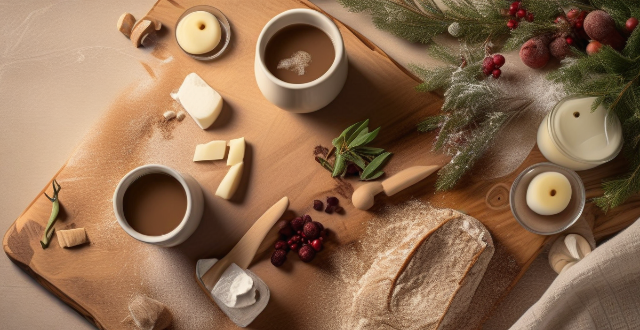
How can I make my Thanksgiving meal more festive and flavorful ?
To make your Thanksgiving meal more festive and flavorful, consider planning ahead, incorporating seasonal ingredients, dressing up your table, experimenting with flavors, offering a variety of desserts, creating a cocktail bar, providing entertainment, and remembering traditions.
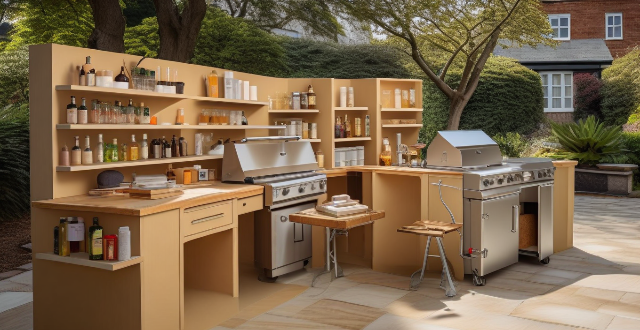
What are the most common mistakes beginner bartenders make ?
The most common mistakes beginner bartenders make include incorrect measurement of ingredients, not knowing basic cocktail techniques, poor glassware choices, inconsistent drink quality, slow service, lack of knowledge about spirits and mixers, weak customer interaction, and neglecting cleanliness and organization. To avoid these errors, it's important to use measuring tools, learn basic techniques, familiarize yourself with different glassware, stick to recipes, practice speed racking, taste and study spirits and mixers, work on communication skills, and maintain a clean and organized workspace.

How can I make my New Year's Eve party more memorable and unique ?
To make your New Year's Eve party stand out, consider unique themes, interactive installations, countdown kits, entertainment options, special food and drinks, and memorable favors. These elements will help create a fun and unforgettable experience for you and your guests.

How can I make drinks look more appealing with garnishes ?
Garnishing drinks is an art form that can elevate the visual appeal of your beverages. It not only enhances the aesthetic but also adds flavor and aroma to your drink. In this guide, we will explore various techniques and ideas to make your drinks look more appealing with garnishes. Importance of Garnishes: Garnishes add visual appeal, enhance flavor and aroma, and create theme and ambiance. Garnish Ideas: Fruit garnishes like slices and wedges, herb garnishes like sprigs and leafy toppers, spice garnishes like cinnamon sticks and star anise, edible flowers such as pansy or viola, and miscellaneous garnishes like cocktail picks and salt rims. Techniques for Applying Garnishes: Rim treatments like wet rims and layered effects, floating garnishes like fruit slices and edible flowers, and skewered garnishes like combination skewers and visual balance. By incorporating various types of garnishes and employing different techniques, you can significantly enhance the visual appeal of your drinks. Remember to consider factors such as color, texture, and flavor when selecting garnishes to create a cohesive and attractive presentation. With these tips, you'll be able to elevate any beverage from ordinary to extraordinary in no time!